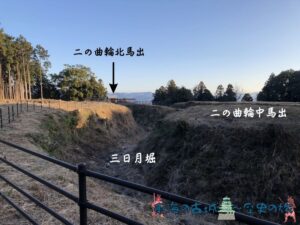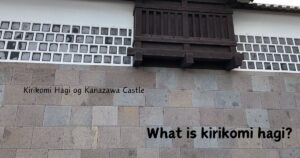“Umadashi” is a defensive structure in Japanese castles, specifically a small bailey made of earth or stone located outside the “Koguchi” (gate) to protect and support it.
It is designed to impede enemy forces from entering the gate directly. Typically located adjacent to castle walls or moats, umadashi were positioned in areas not easily visible to external enemies. They often comprised gates or small exits, with additional defensive features such as secondary moats or watchtowers sometimes surrounding them.
The main functions and purposes of umadashi include:
- Rapid Deployment: Providing a pathway for soldiers or cavalry stationed within the castle to quickly exit and engage the enemy. This capability allowed for swift responses to enemy attacks, enabling quick offensive operations or reconnaissance outside the castle walls.
- Defensive Tactics: Allowing for unexpected attacks from the castle against besieging forces, thereby creating confusion and psychological pressure on the attackers. The element of surprise afforded by umadashi could significantly impact the outcome of engagements.
- Supply and Communication Route: In addition to military functions, umadashi could serve as a route for bringing supplies into the castle or act as an emergency exit. It could also facilitate communication and coordination with forces outside the castle.
There are different types of umadashi, such as the crescent-shaped “maru-umadashi” and the L-shaped “kaku-umadashi,” which were developed in the latter half of the Sengoku period. Enemies had to breach the umadashi before reaching the gate, allowing defenders to launch attacks from both inside and outside the umadashi
Suwahara Castleboasts a splendid maru-umadashi.



